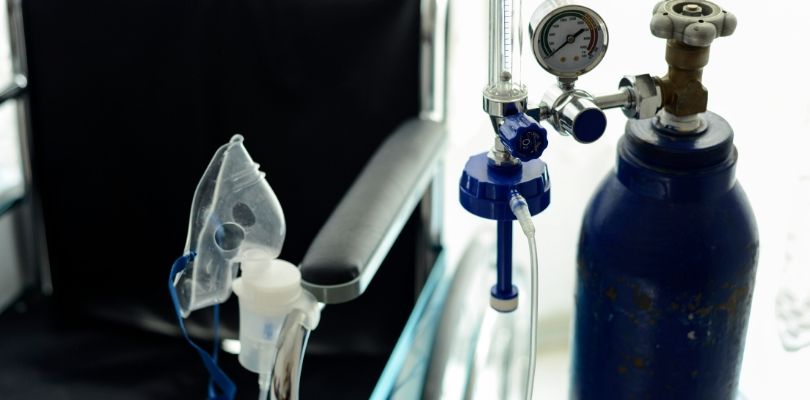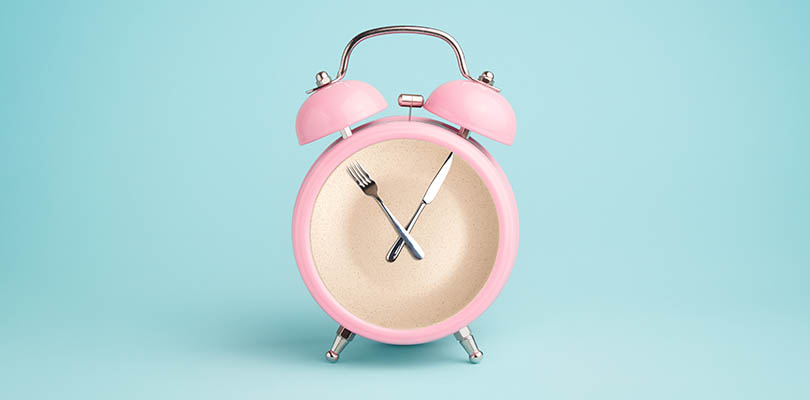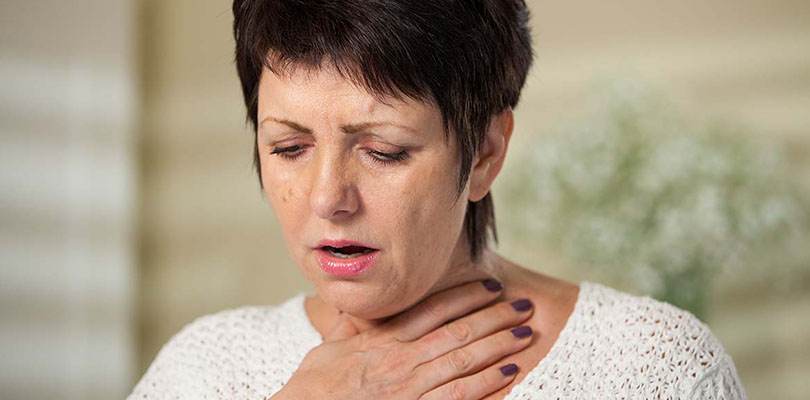What is Portable Oxygen?
If you use oxygen treatments at home, you will also need portable oxygen if you want to get out of the house. Home models can weigh up to 50lbs and uses your home’s electric supply for power. These models are not exactly something you can bring with you in the car.
Chronic Obstructive Pulmonary Disease (COPD)
Portable oxygen tanks are a must-have for those with COPD. This chronic inflammatory lung disease obstructs airflow from the lungs, making breathing difficult, as well as a host of other issues like coughing, wheezing and producing mucus.
This condition is caused by long term exposure to irritating gases or particulate matter, causing distress to your lungs over time. COPD is treatable and those affected can manage their symptoms quite well.
Portable Oxygen Tanks Are a Treatment Method for COPD
Folks with COPD need help from a device to get a sufficient amount of oxygen. Oxygen treatment is vital for COPD patients with hypoxia, which is when the blood has low levels of oxygen. Oxygen treatment increases the amount of oxygen that flows into your lungs and bloodstream to help the lungs function normally. In cases where COPD is very bad and blood oxygen levels are low, more oxygen can help you breathe better and live longer.
How Portable Oxygen Treatment Works
Oxygen treatment can be used 24 hours a day. Having a portable system, as well as oxygen therapy at home, gives you the ability to continue your daily activities without interruption with portable oxygen, nasal tubes, a face mask, or a tube placed into the windpipe that connects to the oxygen source. Portable oxygen treatment is available in two ways: metal tanks or portable oxygen concentrators.
Metal Oxygen Tanks
Oxygen is stored as a liquid or gas in a small tank on wheels (or mounted to a small pull cart). Portable oxygen tanks do not require power, but this convenience is limited to the amount of oxygen available within the metal canister. It may require a bit more planning if you are going to be out of the house for a long period of time.
Portable Oxygen Concentrators
Portable oxygen concentrators do not require a tank and they operate like an air conditioning unit to create air that can be consumed instantly. Ordinary air gets pulled into the machine where it gets filtered and compressed to create medical grade oxygen. This is the oxygen that the individual inhales through the air tube. Portable oxygen concentrators are able to be plugged into wall sockets, car cigarette lighters, or lithium ion generators to charge. As long as the device is charged, it can create an infinite amount of oxygen.
Price of Portable Oxygen Treatment
The cost of oxygen treatment depends on a few variables. A couple considerations will be your prescription and whether you want to opt for a portable tank or a portable oxygen concentrator.
If your cash flow is limited, you may want to choose the tanks since this is the most inexpensive option upfront. The cost depends on the size of tank you need. Over time, ongoing costs will make portable tanks a more expensive option since you will need to replace the cylinders on an ongoing basis.
Concentrators have a larger initial cost which can range from $1,500 USD to $3,000 USD, depending on the model. There are some pharmacies and medical companies that rent these devices if the initial cost is too high or you want to try it out before you commit to purchasing one of your own.
Heart valve disease occurs when one or more heart valves don’t function properly. Learn about the causes, symptoms, and treatment here.
Mobility for Travel
The objective of portable tanks and portable oxygen concentrators is to grant you freedom to move around more easily. There are a few considerations for each option when it comes to mobility.
Considerations for Metal Tanks
There is a finite supply of oxygen available if you use an oxygen cannister, so you will need to think about carrying replacement tanks along, so you do not run out. Tanks always need to be kept in a carrier when in use. If you are travelling with back-up tanks, they should be kept lying flat, so they do not run the risk of falling over. Tanks are easy enough to roll behind you, but they can be a bit bulky and difficult to manoeuvre when it comes to putting them in a car or going up stairs.
Considerations for Oxygen Concentrators
Portable oxygen concentrators are lightweight and can easily be slung over your shoulder and carried in a satchel resembling a small messenger bag. They’re perfect for errands or travel since they do not run out of oxygen. You will need to remember to bring a charging cord along with you in case the battery on the device runs low. If there is no power, the machine cannot create oxygen.
Weight of Portable Oxygen
The weight of your oxygen tank or concentrator will depend on the size of cylinder you need or the model of concentrator you purchase. Portable tanks can weigh between four to 15lbs. Portable oxygen concentrators can weigh a little less than five pounds and up to 10lbs.
How and When You Receive Oxygen Through a Portable Device
Each oxygen unit is unique and will come with specific guidelines on how to use the tank system or concentrator. The oxygen flow rate is set by your healthcare provider. The flow rate shows the amount of oxygen flowing per minute (in litres). Portable tanks have a continuous flow of air, no matter if you are inhaling or exhaling. Air only comes out of the concentrator when you are inhaling. Many devices include a pulse oximeter to measure the amount of oxygen in your body so you can make sure it does not drop to a dangerously low level.
Portable oxygen is necessary, especially for those with COPD. Sticking with long term oxygen treatment can improve your quality of life and make sure you are not stuck at home. An easy-to-use portable oxygen option ensures you are able to pack up and get out of the house whenever you feel like it.







